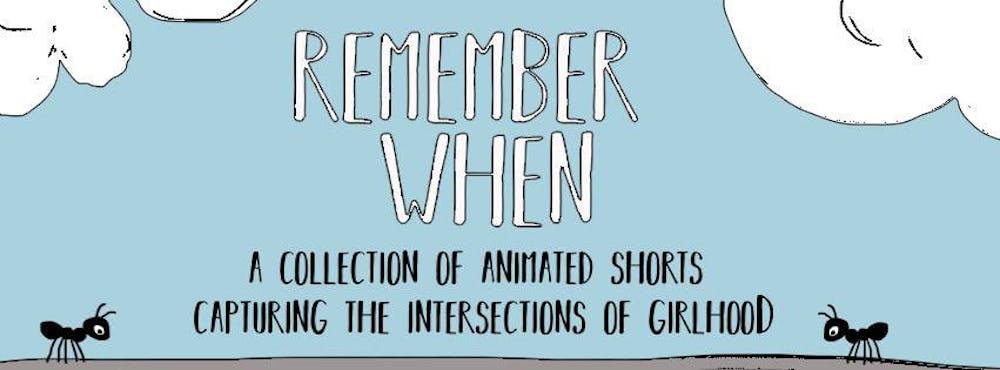For the crowd of Middlebury students, faculty and guests who gathered in Axinn Center 232 last Tuesday afternoon, the world of animated film came to life through a film series called “Remember When: A Collection of Animated Shorts Capturing the Intersections of Girlhood,” curated by filmmaker Lindsey Martin.
“Girlhood” presented a series of narratives that boldly and intelligently challenges the notion that young people exist unaware or unaffected by larger power structures. The stories featured girls in roles that many would argue we don’t see enough of in films both today and historically. Every narrative featured girls in roles beyond young caretakers, trophies and sidekicks.
When the lights turned off, and the mournfully optimistic, intelligently lighthearted, and unequivocally young voices of these girls filled the room, we were instantly catapulted into the world of the imaginary. The scenery was subject to every whim of the speakers’ consciousnesses, that were distinctly youthful and unrestrained despite the troubling realities that they reflected, arguably an effect that could only have been achieved via this sort of animation.
The series explored the use of animation as a way of processing traumatic histories and memories as well as a way to play with our realities and reimagine power dynamics, according to the event organizers. Each film uses animation in a different way, some in combination with live action, but all use the form to evoke nostalgia and reflection.
“I, Destini,” a film by 14-year old Destini Riley from Durham, North Carolina, explores the poignant and imaginative illustration of a youth’s perspective on the effects of having an incarcerated brother. “The FBI Blew up My Ice Skates” is a story born in the Iran Hostage Crisis in 1980 told from the perspective of Haleh, an eight-year old who just wants to enjoy her ice skates. “Love Letter,” directed by Lindsey Martin, features a 13-year old girl grappling with the hardships and emotional complexities of her parents’ divorce.
Through the complicated and artful animated medium, she tells the story of her imaginary friend who hibernates in a jar on her windowsill as she copes with her anxieties. In “My Doodle Diary,” a young girl named Maya writes about everything that rocks her teenage world. This daily narrative perspective into a young girl’s life offered viewers a chance to experience a delightful exploration of youthful expression. “A Place in the Middle,” about an 11-year old girl named Ho’Onani in Honolulu, tells the compelling and beautiful story about her hopes and struggles to become a leader of her hula group. Touching on important ideas of the Hawaiian spirit and femininity, the film celebrates the notion that what truly matters is what’s in your heart.
“It made me think a lot about being a kid that age and using my imagination and reality to understand things and cope with things and all of these submissions did such a good job of bringing the viewer into that world and I so appreciated how accurate that is,” said Emma Hampsten ’18.5.
At Middlebury, we are often afforded the opportunity to study power structures and their impacts through a somewhat distant academic lens, whether in classes such as Race and Ethnicity in the U.S. or The Sociology of Gender. Rarely are we granted the chance to sit down in a theater and experience the artistic manifestations of the thoughts and experiences of those whose lives these power structures so intimately affect.



